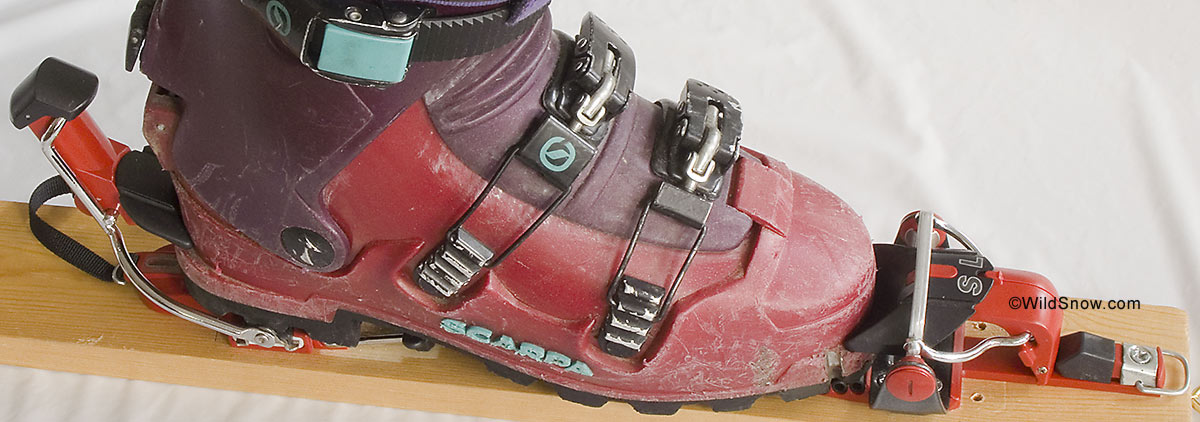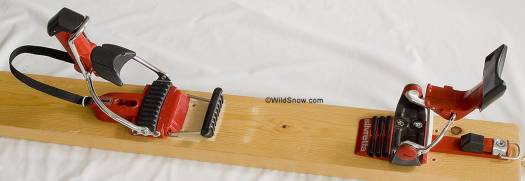In 1994, the Dynafit binding was winning the weight wars by a healthy margin. Competitors to the Barthel “tech” binding were scrambling. Somehow, Silvretta worked out a deal with boot makers to include a fitting that functioned similar to tech fitting sockets: that of attaching the boot toe to the binding so a “plate” or “frame” between the binding toe and heel wasn’t necessary — thus producing substantial weight savings.
The binding Silvretta designed for this is called the SL (presumably meaning “super light”). It was a noble effort, but rushed to market too fast with a fatal flaw. With no way for the toe to release during a fall while in touring mode, the binding would explode into small pieces if you took a forward beater. Such breakage was rarely field repairable. Disaster is a weak word for the ensuing consumer nightmare, not to mention financial problems that haunted Silvretta, leading to their eventual sale to Salewa and Silvretta ceasing to exist as a brand. If any binding in the last 30 years is the “Edsel” of ski touring, this is it, though the Naxo might take a close second and most telemark bindings are contenders as well.
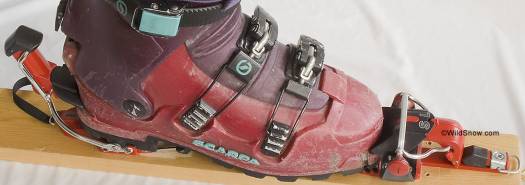
Complete Silvretta SL with a Scarpa Denali boot from the same period, shown in downhill alpine mode. Only a few models of boots ever had the fittings. One boot maker even made a model that included both Dynafit and SL fittings in the toe.
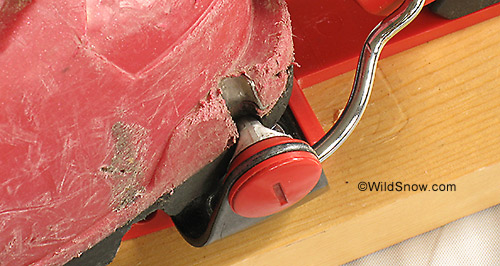
View of binding ready to accept boot for touring backcountry skiing mode.
Working the binding is like doing a ring puzzle, and operates like something out of a Transformer movie. Once you figure our how to flip the toe unit around to touring mode, you slip your boot in and latch. Video below shows the process.
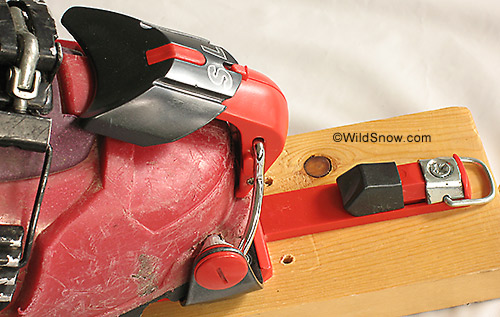
Boot latched in touring mode. It’s solid — too solid.
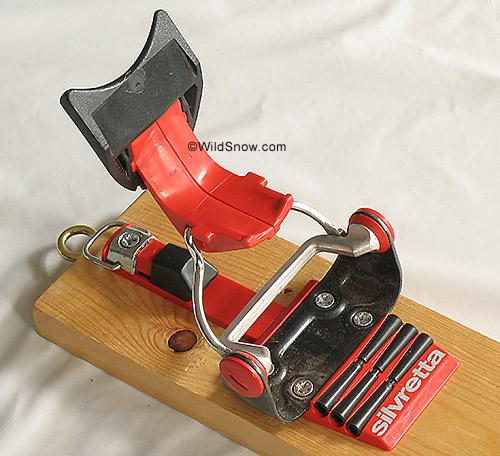
Another toe detail. The small black fitting towards the front (left) of the binding is spring loaded, and provides a small amount of for/aft elasticity to allow for ski flex when the binding is in alpine mode, but the amount of flex is limited compared to other bindings.
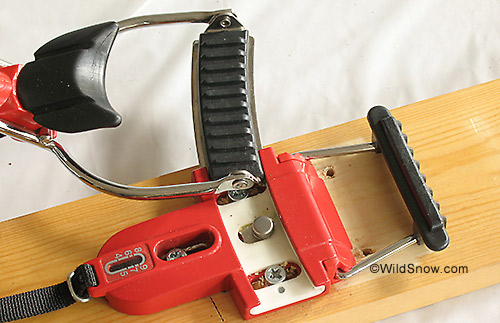
Lateral release functions the same as all other Silvretta backcountry skiing bindings from this period; by having the boot latch assembly slide to the side. See the Silvretta 404 museum display for release details.
In 1995, Couloir Magazine (VIII #1) tried to give this binding the benefit of the doubt when Lou Dawson wrote that “the outlook for this binding is good.” That was not to be, as problems with durability as well as the binding’s inability to allow much ski flex under the boot area made it an unattractive solution that was soon off the market. Weight (one binding with screws): 18 oz, 510 gr

Silvretta SL thumbnail.
This binding was provided by Summit Canyon Mountaineering in Glenwood Springs, Colorado.

